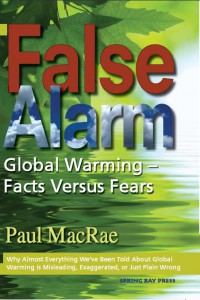Published by paulmacrae on 10 Apr 2025
How Climate Politics is Devastating Canada’s Economy–and What We Can Do About It: A Talk
You can watch this talk by clicking here.
Paul MacRae is a former Times Colonist editorial writer and instructor in writing at the University of Victoria who has done extensive research on how climate politics (Net Zero by 2050) is destroying the economies of Canada and many other countries.
For example, he notes that, using the Paris Agreement’s own calculations, the Net Zero by 2050 policy will cost an estimated $1-$2 trillion a year globally until 2100 ($80 billion a year for Canada), and might reduce the temperature by … 0.04-0.07o Celsius by 2100. This reduction is too small to be perceived by the human senses. Canada’s contribution to global carbon emissions is 1.5 per cent, so Canadian multi-billion-dollar efforts to curb emissions would prevent 0.00105°C in warming.
You can view the talk at STORMRYDERNEWS.



